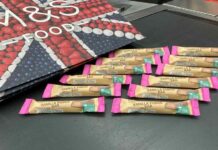The beauty and personal care industry is worth over $500 billion a year and the market is expected to grow annually by 4.75%. Accordingly, the forerunners have eagerly been looking for sustainable packaging solutions. While around 90% of the cosmetics market consist of water-based emulsions, there has not been an alternative for water-based products that biodegrades without leaving permanent microplastics behind. Now, Sulapac has invented a patent pending material for them.
As well as being fully sustainable, the Sulapac barrier fits industry standard requirements. In fact, the test results have been fantastic.
“I’m excited that we managed to create a sustainable barrier that is suitable for water-based products! We are pleased to offer a real game-changer to our customers together with the industry leaders like our Preferred Partner for Cosmetics, Quadpack,” says Dr. Suvi Haimi, CEO and co-founder of Sulapac.
The complete package
At present, Sulapac is also announcing a new flexible material designed for thin-walled jars with excellent impact strength. It has low carbon footprint based on eco-design, climate conscious raw materials and cost-efficient, high-volume manufacturing. Combined with the Sulapac barrier, the company’s trusted partners provide a compelling portfolio of different sized jars for both oil and water-based cosmetics. They also give support throughout the process, a turnkey solution.
“The new barrier developed by Sulapac allows us to continue to offer sustainable innovations that meet and exceed market demands. From new capacities to cutting-edge technical solutions, Quadpack is happy to provide an ever-growing product range in Sulapac material to all beauty brands,” says Pierre-Antoine Henry, Head of Categories at Quadpack, Sulapac’s Preferred Partner for Cosmetics.
Sulapac has made sure that the switch from conventional plastics is as easy as possible. The drop-in solution material can be mass produced with the existing plastic machinery. What’s more, its natural appearance and haptic feel make it stand out. Sulapac is beautiful, functional and sustainable, just like nature.
Currently, the ideal way to recycle a product made of Sulapac material is via industrial composting. It biodegrades without leaving permanent microplastics behind. Mechanical and chemical recycling are also viable options, and Sulapac is developing a closed-loop system. The Take Back Sulapac pilot will be launched in the near future.
Now, Sulapac is looking for forerunner cosmetic brands to join its mission to save the world from plastic waste.




























